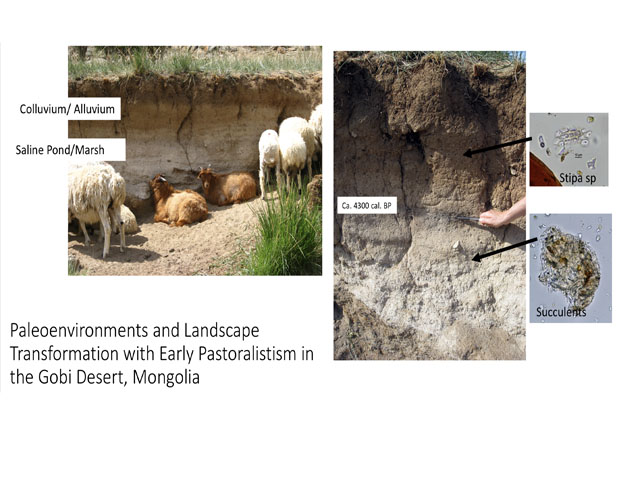
Phytoliths and land-use changes in the Gobi Desert of Mongolia
- Post by: Doris Barboni
- April 30, 2019
- Comments off
Arlene M. Rosen, Thomas C. Hart, Jennifer Farquhar, Joan S. Schneider, Tserendagva Yadmaa. 2019. Holocene Vegetation Cycles, Land-use, and Human Adaptations to Desertification in the Gobi Desert of Mongolia. Vegetation History and Archaeobotany. doi: https://doi.org/10.1007/s00334-018-0710-y
Desertification is an ongoing global problem in many localities worldwide. This is due in part to global warming, and drying conditions, which set in since the Late Holocene Period began. In dryland localities around the world, many researchers suggest the herding activities of pastoralists accelerated the transition from the Middle Holocene mesic vegetation to Late Holocene xeric vegetation. These studies implicate herd animals as the main agents responsible for degraded vegetation communities in the semi-arid zones of North Africa, the Near East, and Central Asia. In this paper, we use phytolith data to provide evidence for an alternative viewpoint on the impact of the first pastoralists to inhabit the Gobi Desert of southern Mongolia. Here we show that pastoralists altered landscapes and vegetation from the Middle Holocene succulents growing around saline ponds on the valley floors, to habitats that favored the more lush steppic Stipa grasses in the Late Holocene, as a direct result of their herding practices in the region.

